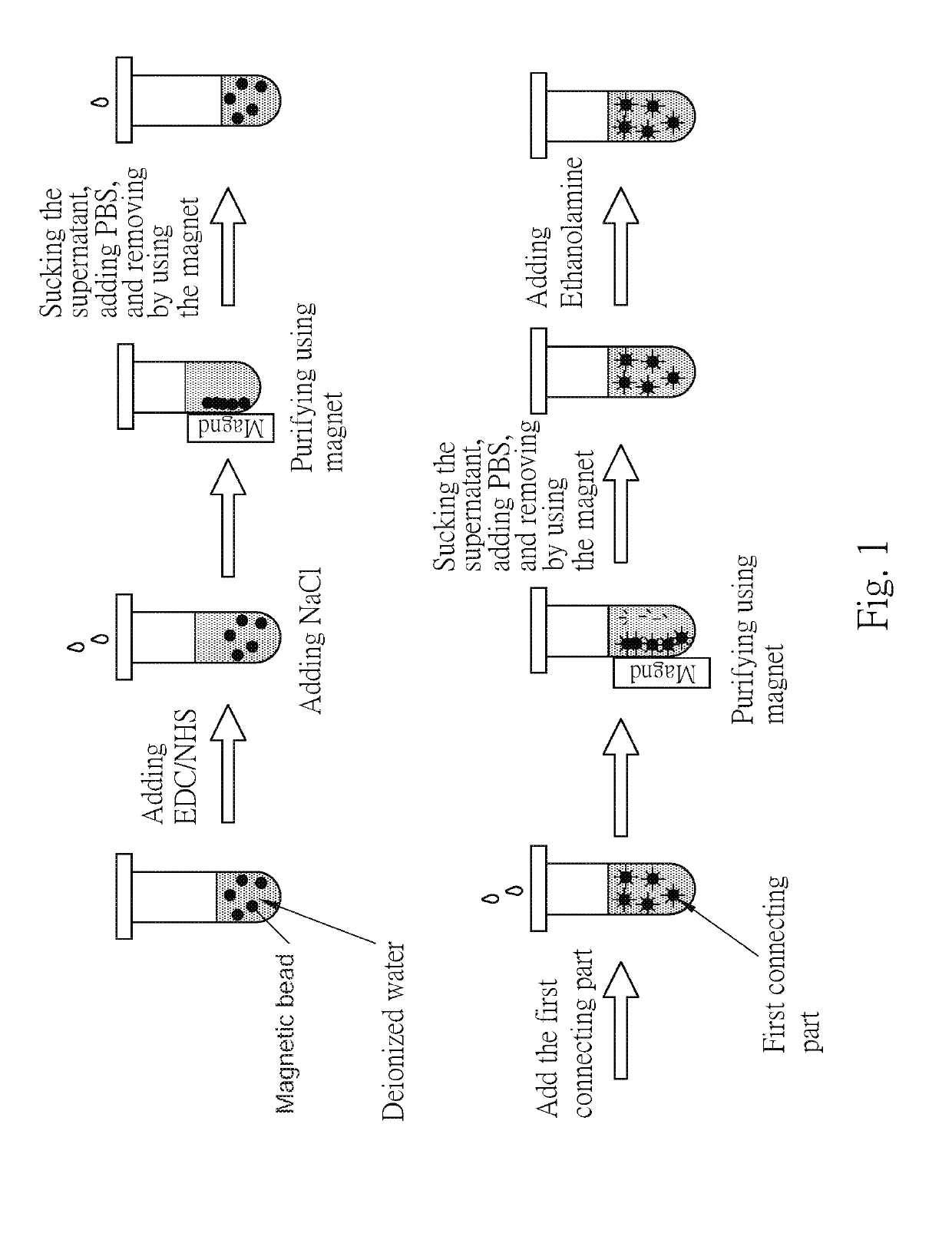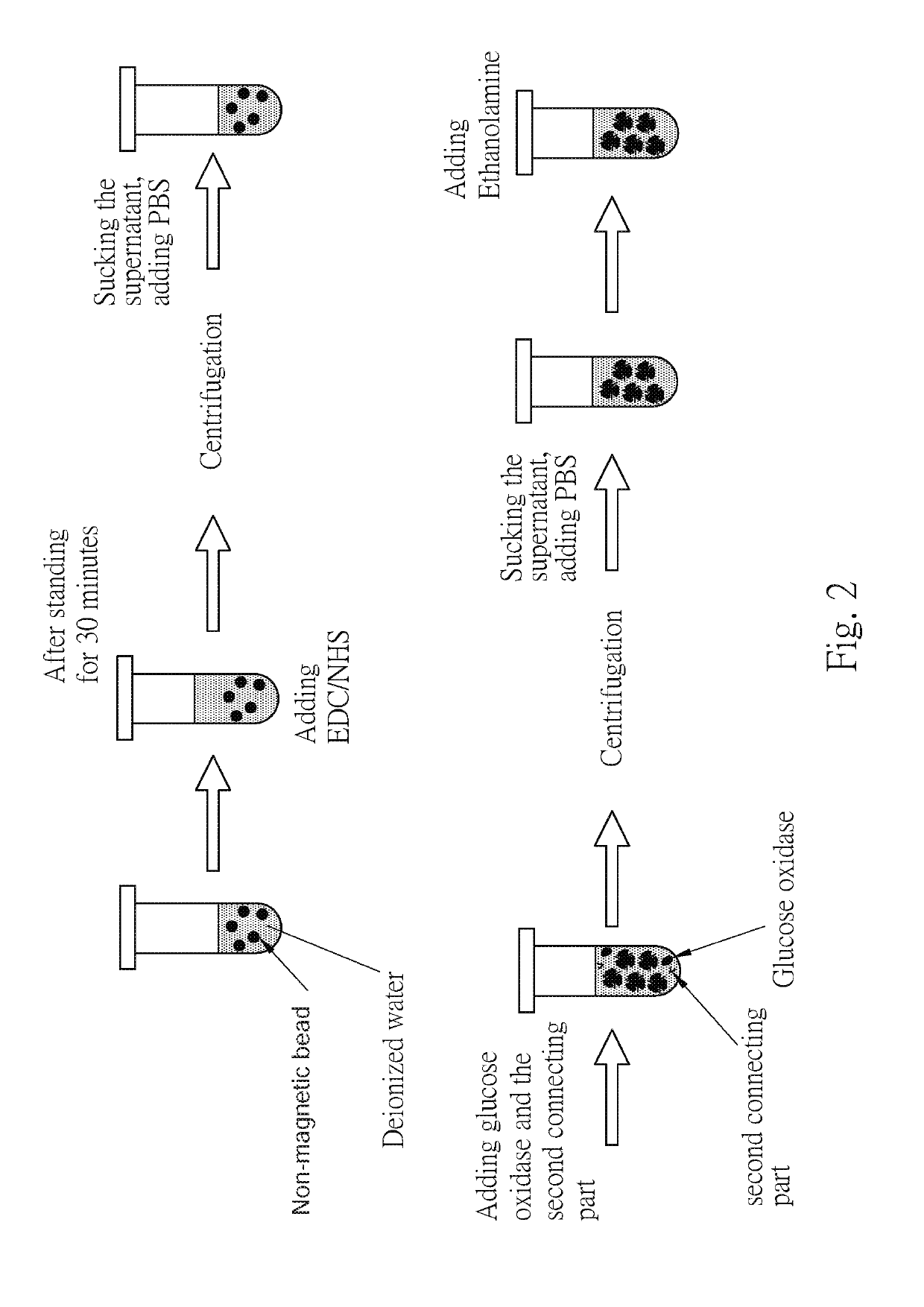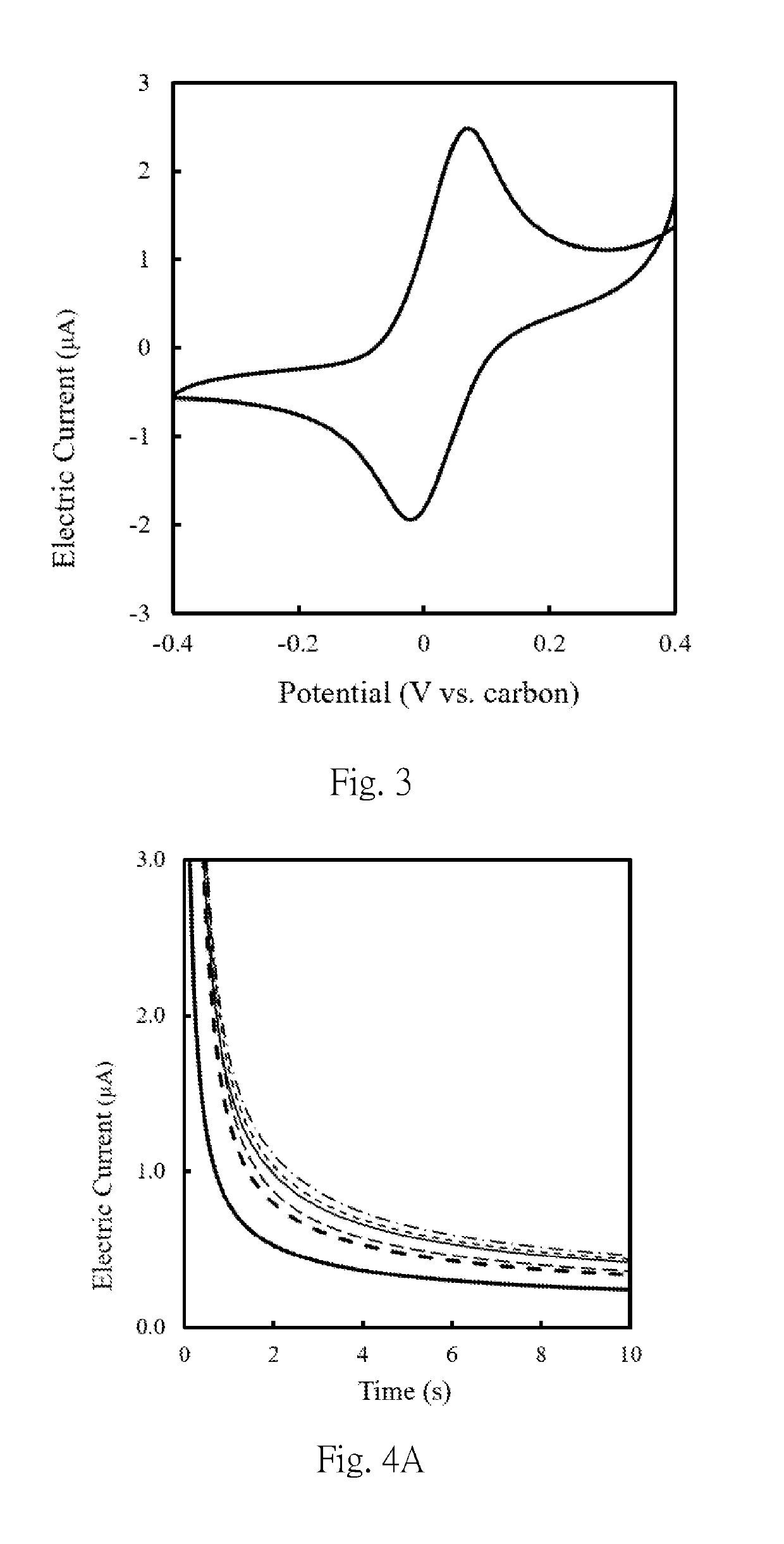Method for detecting the target in a sample
a detection method and target technology, applied in the field of biomedical detection methods, can solve the problems of error in test results or interpretation, drop in enzyme catalytic reaction, and difference in product concentration, so as to avoid individual operation errors and increase detection sensitivity and accuracy
- Summary
- Abstract
- Description
- Claims
- Application Information
AI Technical Summary
Benefits of technology
Problems solved by technology
Method used
Image
Examples
example 1
Preparation of the First Composition
[0054]First, referring to the FIG. 1, took the magnetic bead solution (prepared in deionized water), the surfaces of every magnetic beads were modified by the functional groups of COOH, and the EDC / NHS mixture solution (in MES of 100 mM, pH 4.6), mixed with the same volume ratio, after standing for 30 minutes, added the sodium chloride solution at a concentration of 50 mM or more, adsorbed the magnet beads using magnet, after removing the supernatant added the phosphate buffer at a concentration of 10 mM to detach the beads, and obtain 100 nm beads / PBS solution.
[0055]The first connecting parts solution was dropped into the magnetic beads / PBS solution, uniformly mixed and allowed to stand. Then, sodium chloride having a concentration of 50 mM or more was added, and the magnetic beads were adsorbed by a magnet to remove the supernatant and the unbound first connecting parts. The magnetic beads were purified, phosphate buffer was added, and then 50 μ...
example 2
Preparation of the Second Composition
[0056]Referring to the figure FIG. 2, the non-magnetic beads were taken, the surface of which was modified with COOH functional groups. The non-magnetic beads were mixed with EDC / NHS in the same volume, allowed to stand for more than 30 minutes, and then remove residual EDC / NHS in the solution by centrifugation, wherein the centrifugal speed is preferably 6000 rpm or more. 100 nm of the collected activated non-magnetic bead solution was added to a mixture of enzyme (50 μL) and a second connecting parts (50 μL), and after mixing evenly for a predetermined period of time, the non-magnetic beads were purified by a centrifuge. The supernatant and the unbound enzyme and the second connecting parts were removed, and 50 μL of ethanolamine (deionized water) was added to fill the unbound COOH functional groups on the surface of the non-magnetic beads, and finally centrifuged to remove the unbound ethanolamine to obtain the second composition.
example 3
Analysis on the Composition Ratio of the First Composition and the Second Composition
[0057]A 5 μl 10 mM phosphate buffer containing 200 mM glucose and 200 mM potassium ferricyanide was applied to a two-electrode typed screen printing carbon electrode (hereinafter abbreviated as SPCE electrode), and the results of the cyclic amperometric assay were shown in FIG. 3, the detection potential suitable for the amperometric measurement is set to be +0.05 V to +0.5 V, and the detection time is 1 to 100 seconds. The first composition was prepared according to the method shown in Example 1, wherein the first connecting part was glucose oxidase, which was a protein having a molecular weight of about 160 kDa, and mixed the weight of the first connecting parts and the magnetic beads by concentration ratios (mg / mL: mg / mL) of 0.18:1, 0.37:1, 0.92:1, 1.84:1 or 3.70:1, respectively, to prepare first composition solutions obtained by mixing at different weight concentration ratios. 5 μL each of the f...
PUM
| Property | Measurement | Unit |
|---|---|---|
| molecular weight | aaaaa | aaaaa |
| molecular weight | aaaaa | aaaaa |
| particle diameter | aaaaa | aaaaa |
Abstract
Description
Claims
Application Information
 Login to View More
Login to View More - R&D
- Intellectual Property
- Life Sciences
- Materials
- Tech Scout
- Unparalleled Data Quality
- Higher Quality Content
- 60% Fewer Hallucinations
Browse by: Latest US Patents, China's latest patents, Technical Efficacy Thesaurus, Application Domain, Technology Topic, Popular Technical Reports.
© 2025 PatSnap. All rights reserved.Legal|Privacy policy|Modern Slavery Act Transparency Statement|Sitemap|About US| Contact US: help@patsnap.com



